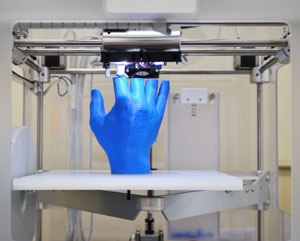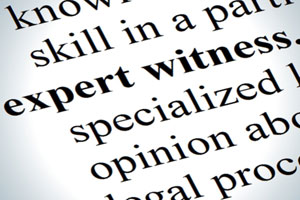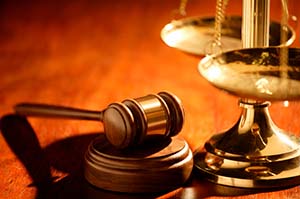Some lawsuits repeatedly showcase the nuances of the federal rules governing expert testimony. The multi-district litigation involving C.R. Bard’s mesh products has produced multiple rulings that offer guidance to lawyers who rely on expert testimony in federal court. The latest ruling sheds light on the circumstances under which dual-hat experts must disclose the materials they prepare when they form opinions.
Facts of the Case
Steven Johns is one of thousands of plaintiffs who sued C.R. Bard after suffering injuries allegedly caused by defects in the company’s polypropylene hernia mesh products. Those lawsuits have been joined in multidistrict litigation. Johns’ lawsuit is the first “bellwether” case that will be tried. Last year, an ExpertPages blog discussed the court’s decision to admit the testimony of Johns’ causation expert.
Johns contends that the company’s Ventralight ST mesh device is defective. The mesh was implanted in Johns to repair a hernia. Johns had a gap in the layer of connective tissue called the fascia. The mesh implant was intended to close that gap.
One side of the Ventralight ST mesh is coated. The side with “ST coating” is placed against an organ, such as the patient’s bowels. The uncoated polypropyIene side is placed over the gap in the fascia.
The coating is intended to delay resorption of the mesh into the organ. The plaintiffs allege that the mesh resorbs too quickly, exposing organs to damage caused by the bare polypropylene. Johns alleges that after his hernia repair, he developed adhesions in a fatty structure associated with the bowel called the omentum. Johns attributes the adhesions to the defective mesh.
Competing Expert Testimony
Bard intends to present the expert testimony of Stephen Badylak, who examined photomicrographs of slides from Bard’s clinical animal study on the Ventralight ST. Bard wants Badylak to testify that the ST coating remained on the mesh device 28 days after it is implanted. The testimony is arguably important because the plaintiffs contend that the coating was generally gone within a week.
The plaintiffs had hired Tamas Nagy to conduct a similar analysis. Nagy reviewed slides from the animal study, took photomicrographs of the slides, reviewed them using a score sheet (as did Badylak), and made notes of his findings. After consulting with Nagy, the plaintiffs represented that Nagy would not offer any expert opinions.
Nagy did not prepare an expert report. On that basis, the defendants moved to strike him as an expert. The parties disputed whether the plaintiffs properly redesignated Nagy as a consulting rather than a testifying expert. The court took no immediate action on the motion to strike Nagy.
In a second supplemental expert report, Badylak advanced his opinion about the presence of ST coating after 28 days of implantation. The plaintiffs challenged the admissibility of Badylak’s opinion. The court determined that Badylak’s methodology was sufficiently reliable to permit his testimony.
The court also allowed the plaintiffs to call Nagy as a rebuttal expert to challenge Badylak’s conclusion that coating remained after 28 days. Based on that ruling, the court denied the motion to strike Nagy as an expert.
Nagy re-reviewed the slides and prepared a rebuttal expert report. When Bard deposed him, he failed to produce materials related to his initial review of the slides, including his photomicrographs, notes, and score sheets. Bard then paused the deposition and moved to compel production of those materials.
Motion to Compel
The court began with the proposition that an opposing party is entitled to production of all materials “considered” by an expert before or while forming an expert opinion, whether or not the expert relies on those materials in the expert’s report. An expert “considers” materials when the expert receives, reads, reviews, or authors those materials, provided that their subject matter relates to the opinions that the expert expresses. The party resisting disclosure bears the burden of showing that the expert did not consider the materials.
Nagy testified that he re-reviewed the photomicrographs before he produced his rebuttal report. He therefore “considered” them in connection with the opinions he formed. There seems to be little dispute that Nagy’s photomicrographs were discoverable.
Nagy authored his notes and score sheets. Since those documents relate to the general subject matter of the opinions Nagy expressed in his rebuttal report, the court began by asking whether the plaintiffs met their burden of showing that Nagy did not consider them in reaching the opinions he expressed.
Nagy testified that he did not need to re-score the score sheets when he formed his rebuttal opinion. The court did not regard Nagy’s testimony as a denial that he considered the original score sheets when he formed the opinions expressed in his rebuttal report. In any event, an expert’s denial that he considered certain data or facts does not control the dispute because the defendants are not required to believe an expert’s testimony.
The court also rejected the plaintiffs’ assertion that Nagy made the notes and score sheets during his initial review for an unrelated purpose — to examine the degree of inflammatory response in the tissue. Nagy’s rebuttal report discussed inflammatory response as evidence that the ST coating was or was not present on the mesh, suggesting that his first and second review did not address entirely different subjects. Ambiguity about the scope of the first analysis made the notes and score sheets discoverable.
Work Product Objections
The plaintiffs also resisted production of the notes and score sheets on the ground that they are not discoverable “facts and data.” The plaintiffs argued that the notes and score sheets contain Nagy’s interpretation of and commentary about the slides he reviewed and are thus work product that is protected from discovery.
The court declined to make an expert’s thought processes “categorically undiscoverable.” Nagy testified that the notes represented his visual observations of the slides. Since “visual observation” was the testing process that Nagy employed, the court did not see how else Nagy could capture the presence or absence of the characteristics he observed. The notes and score sheets were therefore discoverable “facts and data.”
To the extent that the attorney work-product privilege protects communications between an expert and an attorney, it does not extend to an expert’s own development of the opinions he expressed. The attorney work-product privilege protects an attorney’s mental impressions, not those of an expert. Since no attorney’s mental impressions or legal theories were reflected in the score sheets or notes, they were not entitled to work-product protection.
Dual Hat Expert
Perhaps the most meaningful challenge to the production of Nagy’s notes and score sheets was rooted in the notion that Nagy was a consulting expert when he created those materials and only became a testifying expert when it became necessary to rebut Badylak’s report. A non-testifying, consulting expert is generally immune from discovery. Redesignation as a testifying expert does not cause a loss of immunity as to materials that were considered “uniquely” in the expert’s role as a consultant.
The court concluded that the plaintiffs failed to carry their burden of demonstrating that Nagy prepared his original notes and score sheets “uniquely” in his role as a consulting expert. The court did not believe that Nagy could “draw a line in the sand” between information he considered in a consulting context and information he considered when he formed his rebuttal opinions. Given the similarity of the subject matter that Nagy was asked to draw conclusions about as a consultant and later as a testifying witness, and given that his conclusions in each instance were based on a review of the same slides, the court thought it likely that Nagy’s score sheets and notes were not “unique” to the work he performed as a consulting expert.









